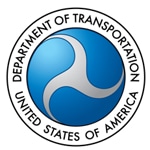
“A world-class passenger rail network in our fastest-growing regions is no luxury; it’s a necessity.
[The US Department of Transportation] will undertake a … planning effort to create a shared, workable vision for a Southeast passenger rail network that connects Washington, DC to Richmond, to Charlotte, to Raleigh, and to Atlanta. These are cities that –like their Northeast Corridor counterparts– are business and population centers between which people need a travel option beyond crowded highways and airplanes.”
The planning process will help establish a common, long-term vision for intrastate and regional passenger rail services based upon existing conditions, projections of future travel demand, and the optimal role for the rail network with multi-modal connections.
The study was awarded in response to a Statement of Interest submitted to the Federal Railroad Administration (FRA) by the N.C. Department of Transportation on behalf of the District of Columbia, Virginia, North Carolina, South Carolina, Georgia, and Florida. The study will build upon work already completed by these partners as well as the Virginia-North Carolina Interstate Rail Compact.
The study will be led by FRA and a consultant team with input from multiple stakeholders including state departments of transportation, state and regional economic development organizations, chambers of commerce, Class I, regional, and short line railroad operators, regional and select local planning organizations, select regional and local transit operators, and rail advocacy groups.
Through stakeholder dialogue and engagement, the study will develop an implementable vision for the role of rail in providing transportation options between growing business and population centers, and in promoting economic development in the Southeast.
Related News
- Local 9 Car Show – Car Registration
- Public Comment of SMART-TD Regarding Tesla’s Special Permit Request for Transporting Lithium Batteries by Rail
- Colorado Transit Worker Safety Bill (House Bill 25-1290)
- Assembly, No. 1672
- SMART-TD’s Public Comment Opposing CSX’s “Zero-to-Zero” Push
- Local 435, North Florida Building Trades win big on Jacksonville Jaguars stadium
- SMART Mobile App Flyer
- House Docket, No. 2682
- FRA Waivers for Autonomous Rail Testing
- Riders resist driverless technologies in Chicagoland